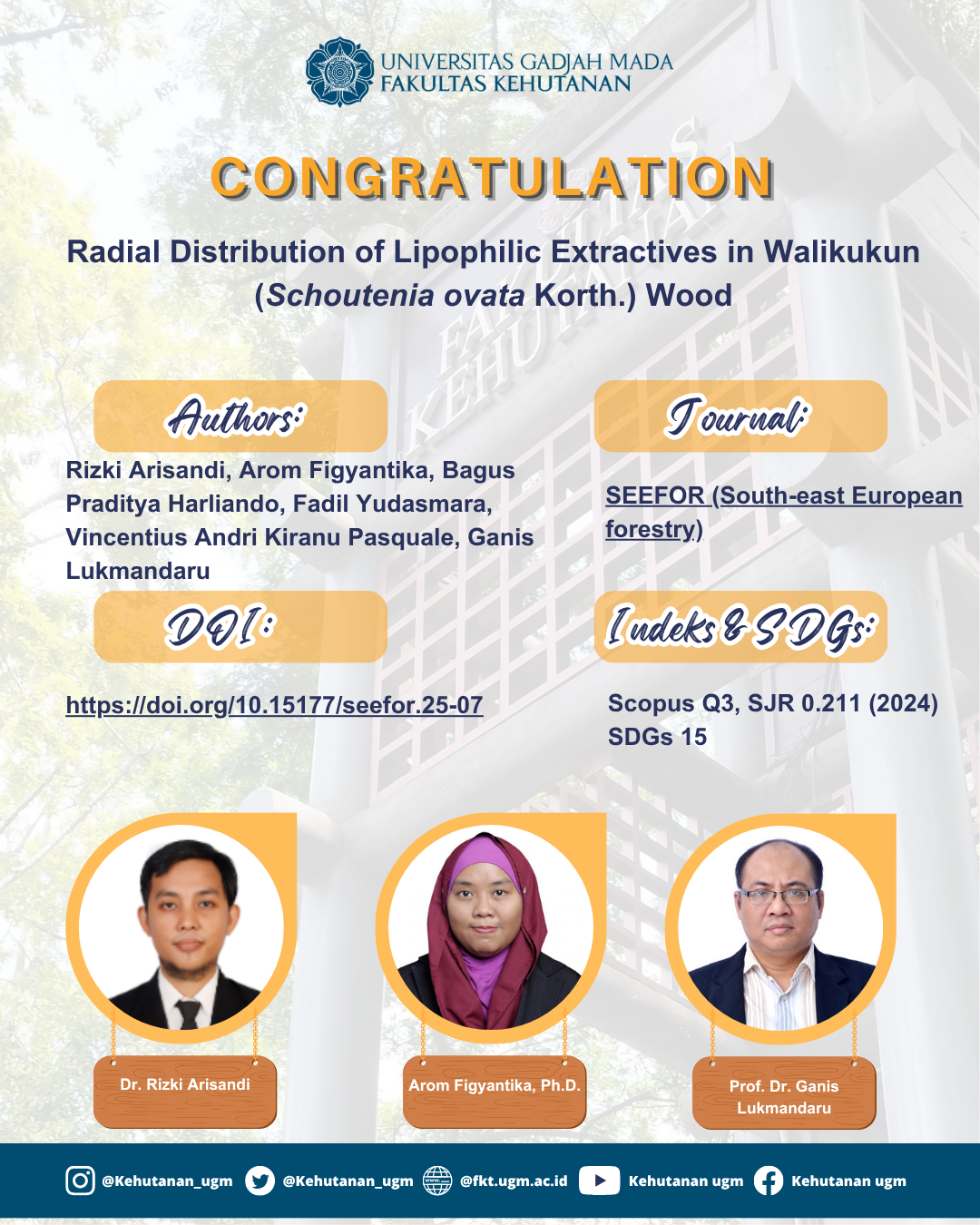
Abstract
Walikukun (Schoutenia ovata Korth.) is a commercially significant wood species in Indonesia. Heartwood, in particular, is important due to the natural durability and aesthetics, while lipophilic extractives play a crucial role in the formation. Therefore, this study aimed to determine the levels of lipophilic compounds in different radial positions associated with the formation of Walikukun heartwood. The results showed that the mean of n-hexane, methanol, and hot water extractive content ranged from 0.97% to 1.35%, 7.18% to 14.4%, and 1.73% to 2.23% in oven-dried wood, respectively. In general, the total extractive content increased from sapwood to heartwood. This pattern was similar to the methanol extractive content. The highest extractive contents of n-hexane level were in transition zone, followed by heartwood and sapwood. Furthermore, the highest lipophilic compounds were found in alkenes, followed by fatty alcohols, fatty acids, and sterols. Fatty acids and sterols decreased radially from heartwood to sapwood, while fatty alcohols increased from heartwood to transition zone, then decreased to sapwood. The decrease in the proportion of fatty acids, sterols and fatty alcohols from heartwood to sapwood is probably due to the heartwood formation process where lipid compounds are metabolised in the sapwood or transition zone.
SDGs:
SDG 15:Life on Land
Link Dokumen:
Download
